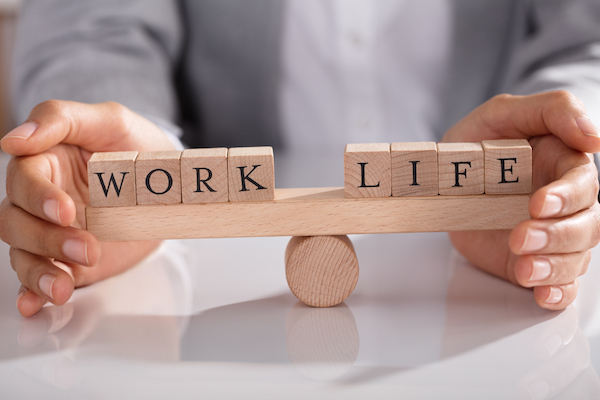Burnout is best described as an enduring state of exhaustion that manifests mentally, physically and emotionally and is caused by the stressors of the workplace.
For the legal industry burnout is the ubiquitous problem that continues to be insufficiently addressed and any personal story is merely one example of this immense universal problem that lawyers face daily.
For lawyers, burnout it seems, is now being recognised as a serious issue in the workplace but unfortunately it is still questionable whether it is being sufficiently addressed by the legal industry itself.
Earlier this year, Safework NSW, the workplace safety watchdog, classified law as a high-risk profession for the hazard of fatigue. The determination puts the profession in the same risk category as emergency services workers, people working shifts or nights and those in fly-in, fly-out roles. Legal professionals and IT consultants are the only white-collar roles singled out as dangerous by the regulator.
Their findings indicated that lawyers working long hours are at the same risk of fatigue-related injuries and illnesses as paramedics, nurses and other shift workers. The determination came following multiple investigations into corporate law firms and a spike in workers’ compensation claims from professional services staff.
Fatigue though, is only one element of the manifestation of, or contribution to burnout. Lawyers are also susceptible to burnout simply because of the competitive and demanding nature of practicing law. They are subjected, on a daily basis to pressures from all elements of their working environment; their responsibility to their firm, their client, the court process, billable hours requirements, financial targets, legal time limits in cases, aggressive opposing parties – other lawyers, unattainable client expectations, aggressively ambitious colleagues, significant case loads and then the additional KPIs to see them justify their promotion through the ranks. Add into this, dealing with the clients themselves and their trauma, traumatic cases and then family life outside of the office. It makes for a perfect storm for a lack of healthy work-life balance.
Through all of these pressures, lawyers are expected to overcome each challenge with professionalism, with their ethical obligations in the background and the image of the profession.

The issue of long-hour work culture
What is clear is that lawyers’ risk of burnout is inextricably connected to the amount of time they spend at work. It is little wonder that lawyers most reported symptoms related to work stress are sleep disturbance, anxiety and depression. Studies also suggest that lawyers demonstrate the highest risk for depression and substance abuse when compared to other high stress, demanding professions.
To illustrate this, in 2012, a Lawyers Weekly survey found a quarter of lawyers spent at least 12 hours at work each day, a figure that’s almost double the national average for actual hours worked.
This has not improved, having over 12-hour workdays was one of the key findings from the 2020-19 Legal Cheek annual survey of 2,500 trainees and junior associates at nearly 100 UK law firms.
A survey by Thomson Reuters of Australian law firms showed that on top of their contract hours, 57% usually worked an additional 10 hours per week, 21% worked an extra 15 hours per week, and 11% worked an additional 20 hours per week. Surprisingly, it was General Practice Firms working the longest hours, with half of fee earners claiming they worked an average of 20 hours extra each week. When asked what was causing this growing work load, more than half (55%) put it down to increasing demands from their employer, 22% said it was down to clients expecting more servicing for the same fees, 13% said their company was cost-cutting, and 10% said it was down to there being less fee earners within the Firm.
The perception is that it is the large commercial law firms that impose these working hours on junior solicitors (think – the media image of suited solicitors settling multi-million $ contracts, working through the night), but the pressures of long working hours, high job demand and occupational stress exist in all areas of the legal profession. The reality is, all lawyers are required to work exceptionally long hours to fulfil client and employer expectations.
The impact of COVID-19 on burnout
The shift to work-from-home and flexible hours through COVID-19 lockdowns, has also impacted most lawyers’ workloads whether for better or worse is yet to be seen. Personally, I suspect it may not be for the better, once the usual parameters of physically being in an office are removed.
Putting this into context – a World Health Organisation study found that working more than 55 hours a week dramatically increases your risk for a stroke and heart disease.
As young law students, we know that we are going to have to work hard to do the job and in effect “prove ourselves”. Lawyers are not afraid of that. But the expectations from employers have increased as the commercial environment has tightened. The competition for training contracts and graduate jobs has become cutthroat, meaning young lawyers are forced to feel they have to prove themselves by working harder than the next person. In addition, this trend does not end at a junior lawyer, once you have “proved yourself” and started to move up the ranks, the pressures just change – to bigger case loads, higher billing targets, more complex cases, additional management requirements, and business development.
Granted some of this is not all down to the work environment. Feeding into this is the lawyer personality – the majority of us are ‘Type A’ personalities (Type A personality is characterised by a degree of competitiveness, a substantial work ethic, and an inner drive to achieve) but also there is the probable actual love of the law.

What does this absence of a healthy work-life balance mean for the profession?
This imbalance has a direct impact on lawyer attrition, especially amongst young lawyers. According to a Lawyers Weekly study conducted in 2019, 53.2% of lawyers with one to three years of experience intend to leave their current employers, compared to 38.9% of those with less than a year under their belts. That is 2 in 5 lawyers!
Lack of retention has financial implications for firms in the process of recruitment, as well as the hidden costs in the loss of institutional knowledge, continuity, team culture and customer dissatisfaction. One UK study by Oxford Economics suggests that the average cost of replacing a legal professional, totals around £40,000, (approx. AU$75,000) and that the typical recruitment and training period for a new hire takes 32 weeks.
There is also a definite shift occurring with lawyers wanting to do things their own way, so we have seen an increase in people setting up on their own as sole practitioners to enable them to feel some control over their working lives. The lawyers doing this are also getting younger. One would hope that this younger generation are more aware of their mental health with the increased focus on it and actual learning around caring for yourself. So, you would hope to see a shift in the blind willingness of lawyers prepared to work themselves into the ground or a breakdown.
Until then there is a responsibility on firms to look after their staff and not just pay lip service to the tag lines of being a good employer.
My advice to new lawyers – have an outside interest before you embark on the career. Something that can drag you out of the office even when there is still work to be done.
Definition of burnout: an occupational phenomenon not a medical condition
According to the World Health Organisation, burnout is classified as an occupational phenomenon and not as a medical condition.

The work environment is not the only source of burnout
Parents, partners, professional and non-professional caregivers can also experience endless exhaustion, feel overwhelmed by their responsibilities, and develop a sense of failure in their role. These forms of burnout are referred to as parental burnout, relationship burnout, and caregiver burnout, respectively.
A published opinion, criticises the view of burnout as a work-specific condition only defining it a multi-dimensional concept. The authors conclude “that the field-dominating, multidimensional theory of burnout should abandon as groundless the idea that burnout is a specifically job-related phenomenon and define burnout as a multi-domain syndrome. The shift from a work-specific to a generic approach would allow both finer analysis and wider synthesis in research on chronic stress and burnout”. More research is required to understand burnout in a wider perspective.
Difference between burnout and stress
Burnout is different from excessive stress, whereby people still feel to be capable of managing the workload with a positive outcome. Chronic stress can lead to anxiety disorder, burnout, instead, makes people more prone to depression. Predisposition to burnout relates to people with perfectionist tendencies, the need to be in control, being a high achiever and pessimistic view of oneself.
What is burnout, really?
Burnout is a syndrome conceptualised as resulting from chronic workplace stress that has not been successfully managed. It is characterised by three dimensions:
- Feelings of energy depletion or exhaustion,
- Increased mental distance from one’s job, or feelings of negativism or cynicism related to one’s job,
- Reduced professional efficacy.
Burnout refers specifically to phenomena in the occupational context and should not be applied to describe experiences in other areas of life (WHO, 2019).

Despite this definition, some experts believe that conditions such as depression, are behind burnout. Within this complexity there are also individual factors, intrinsic personality traits and family life that can influence who experiences job burnout. Once developed, burnout can detrimentally affect people’s physical and mental health. The symptoms which are initially primarily psychological can have an impact on the person’s physiology. Excessive stress, fatigue can result into heart disease, high blood pressure, type 2 diabetes and susceptibility to illness.
Manifestations of job burnout
- Sense of failure and self-doubt,
- Detachment and feeling of loneliness,
- people become cynical at work,
- Having difficulties to go and getting started at work,
- Become irritable toward co-workers,
- Low energy and reduced productivity,
- Concentration difficulties,
- Lack of satisfaction from achievements,
- Use of drugs, alcohol of altered food intake
- Symptoms like headache, stomach/bowel issues, other physical complaints
The possible causal factors of burnout
- Lack of control on work related decisions, time schedule, assignments, workload, lack of resources
- Unclear job expectations
- Being bullied or undermined by boss or colleagues
- Job being monotonous or chaotic requiring extreme energy to stay focused
- Lack of social support at work and elsewhere
- Work-life imbalance, longer hours, lack of time for family and friends
The risk factors leading to job burnout
- Heavy workload and long hours
- Struggle with work-life balance
- Health care profession
- Feeling of no control over work

How to overcome burnout
- Begin a conversation with your superior to modify work environment and expectations
- Seek support from colleagues, family, friends and professionals
- Engage in relaxing activities (yoga, meditation, mindfulness)
- Physical exercise to reduce stress
- Improve sleep quality
- Find work-life balance
- Take time off
- Reduce intake of food, alcohol and drugs
In conclusion, it is important to recognise the first signs of burnout in the workplace (and beyond) both from the workers’ and the supervisors’ perspective to prevent a full manifestation of this syndrome. Fortunately, with the increasing attention toward workers wellbeing, company leaders are slowly becoming more aware of the risks leading to burnout by implementing ways to monitor employees’ workload and possible degeneration into burnout. The analysis of personality types relative to the role assigned to an employee is a positive approach to understand the suitability of a worker to the job. For this, a healthy communication in the workplace is critical to understand a worker’s needs and professional conditions. It is pivotal to make sure that each employee is living with a good work life balance, relying on a reasonable number of hours and regular vacations.